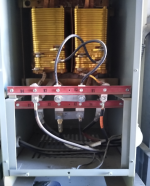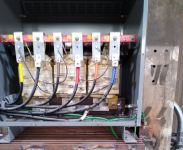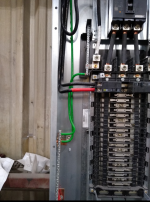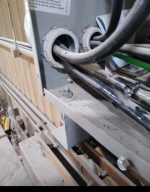wwhitney
Senior Member
- Location
- Berkeley, CA
- Occupation
- Retired
At a service, metallic equipment upstream of the service disconnect gets bonded to the grounded service conductor. But if I understand correctly, for an SDS where the System Bonding Jumper is at the secondary disconnect/OCPD rather that at the transformer, a separate Supply Side Bonding Jumper is run back to the transformer case.
Why does the NCE requires this separate SSBJ, rather than permitting bonding the transformer case to the secondary grounded conductor? What's different between the service and the SDS?
Thanks,
Wayne
Why does the NCE requires this separate SSBJ, rather than permitting bonding the transformer case to the secondary grounded conductor? What's different between the service and the SDS?
Thanks,
Wayne






